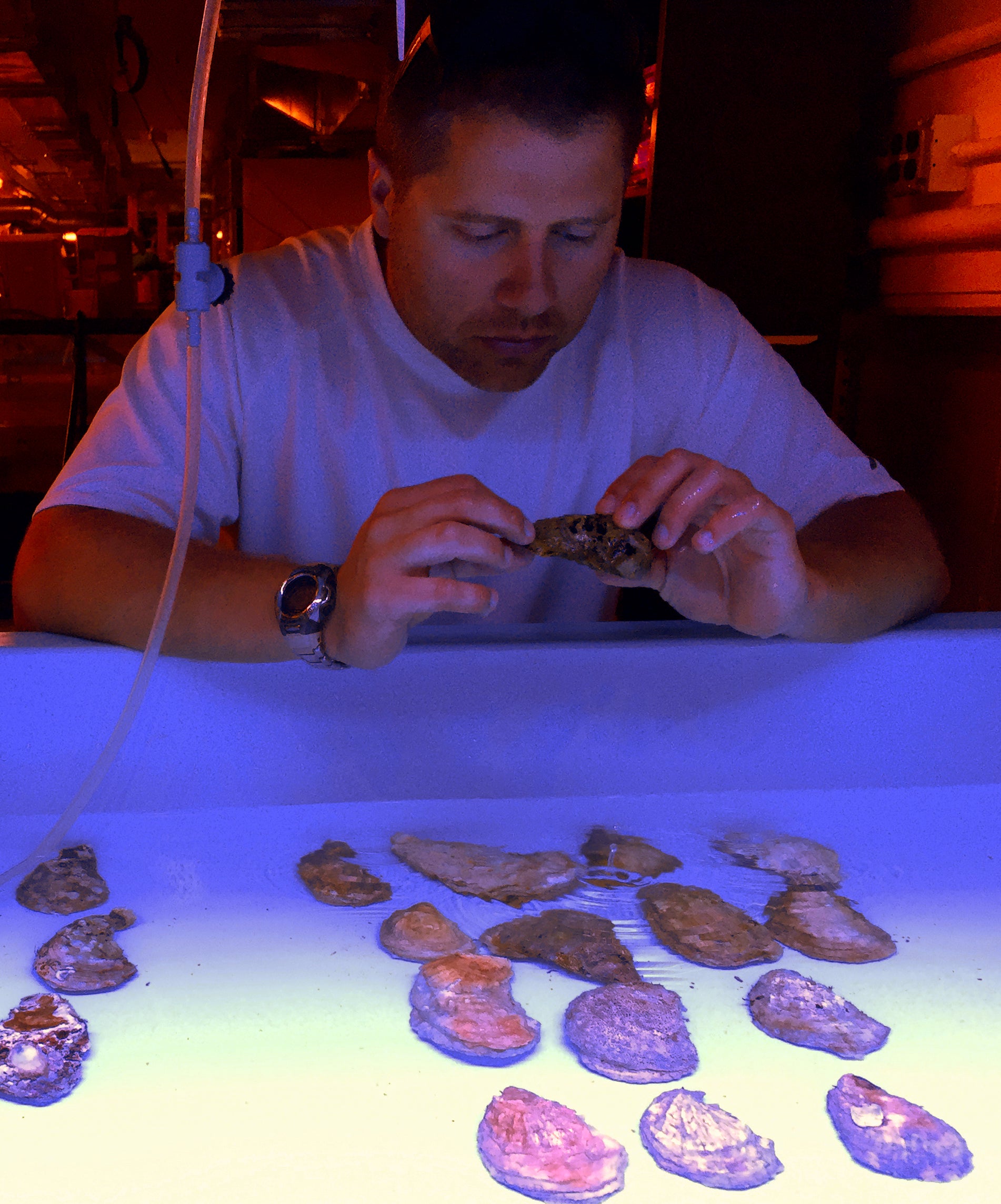URI scientist awarded NSF grant to study effects of coastal stressors on oysters
 |
| URI Assistant Professor Jonathan Puritz examines oysters in a laboratory as part of his research. (Photo by Johanna Harvey) |
To better understand
how combinations of these stressors may affect the development and population
structure of eastern oysters, the National Science Foundation has awarded a
$680,000 grant to University of Rhode Island biologist Jonathan Puritz, who
will conduct a series of laboratory experiments and field studies in estuaries
along the East Coast.
Puritz
will focus primarily on how hypoxia, coastal acidification and low salinity
levels affect larval and juvenile oysters, while also examining the role these
stressors play in shaping the evolution of oyster populations.
“Oysters are incredibly important from a community ecology standpoint,” said Puritz, URI assistant professor of biological sciences.
“They form reefs that support dozens of other species, they provide ecosystem services like improving water quality, and they support a large aquaculture industry in the U.S. If they’re not having successful reproduction due to these stressors, then efforts to restore natural oyster reefs may only be putting a Band-Aid on the situation.”
All of the stressors Puritz will be studying are linked to human populations. Low salinity levels in estuaries are associated with large quantities of freshwater that runs off a human-modified landscape following storms.
Coastal
acidification is driven by climate change and nutrient discharges into
waterways. Excess nutrients also increase hypoxia and subsequent microbial and
community metabolism and respiration, which drives up carbon dioxide levels and
lowers dissolved oxygen levels in the water.
“As larvae grow and develop, they may be able to tolerate short-term exposures to environmental stressors, but prolonged exposure may reduce subsequent survival, especially in juveniles,” Puritz said.
“Larval and early-juvenile interactions
with multiple stressors have the potential to disrupt gene flow or act as a
selective force, structuring populations through genotype-environment
interactions.”
The
URI professor’s research has two phases. In the experimental phase, he will
expose oyster larvae to different combinations of the three stressors in a
laboratory to examine changes in their growth, mortality and respiration. He
will also look for specific genes in the oyster genome that shift in response
to the stressors.
“Hopefully
we’ll be able to find different variants in these genes that might lead to some
sort of resistance,” he said.
In
the field component of the study, Puritz will sample adult oysters in
Narragansett Bay, Long Island Sound, Delaware Bay and Chesapeake Bay to look
for correlations between the environmental conditions and the genes identified
in the laboratory studies.
“We
know that the larvae and juveniles are not going to like the stressors,
especially in combination. There’s no doubt about it,” he said. “We’ve found
evidence in other studies that there are parts of the genome that respond to
stressors at the larval stage. What we haven’t done yet is connect the larval
and juvenile studies to the adults.”
Puritz
said it makes sense that the life history stages are connected, but he doesn’t
know how much the early stages are linked to adult populations.
“That’s
the knowledge gap we’re trying to close,” he said.
Once
he closes that knowledge gap, Puritz will host a community workshop for oyster
farmers, conservationists, fisheries managers and others to share what he has
learned and teach them how to use his online database of geo-referenced genetic
information so they can apply it to their own work.
“There
are only a few suppliers of oyster seed to most farmers, so if we can find out
about the different genetic variants in different localities, we can help these
breeders integrate some of that variation into their domestic lines, which
could then be sold to smaller aquaculturists,” said Puritz.
In
addition, he will host a technical workshop for early-career researchers on how
to use the genetic techniques he is developing in this study.